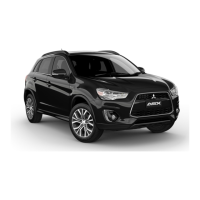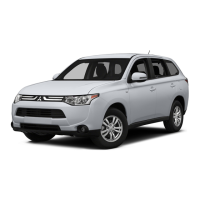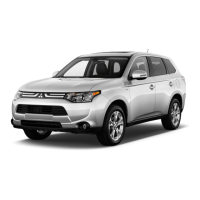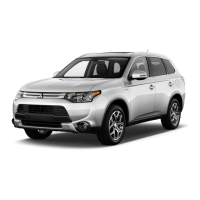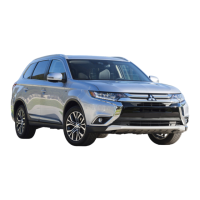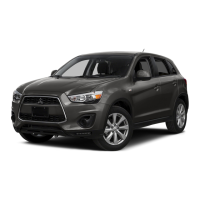Cautions on the handling of 4-wheel drive vehicles
5-88 Features and controls
N00530801214
Since the driving torque can be applied to the
four wheels, the driving performance of the
vehicle when operating in 4-wheel drive is
greatly affected by the condition of the tires.
Pay close attention to the tires.
Install only the specified tires on all
wheels. Refer to “Tires and wheels” on
page 11-7.
Be sure all four tires and wheels are the
same size and type.
When it is necessary to replace any of the
tires or wheels, replace all four.
All tires should be rotated before the wear
difference between the front and rear tires
is recognizable.
Good vehicle performance cannot be
expected if there is a difference in wear
between tires. Refer to “Tire rotation” on
page 9-20.
Check the tire inflation pressure regularly.
Cautions on the handling of
4-wheel drive vehicles
Tires and wheels
Always use tires of the same size, type, and
brand that have no wear differences. Using
tires of different size, type, brands or degree
of wear, will increase the differential oil tem-
perature and result in possible damage to the
driving system. Further, the drive train will
be subject to excessive loading, possibly
leading to oil leakage, component seizure, or
other serious failures.
Towing
Do not tow 4-wheel drive vehicles with the
front or rear wheels on the ground (Type A
or Type B) as illustrated. This could result in
damage to the drivetrain, or unstable towing.
If you tow 4-wheel drive vehicles, use Type
C or Type D equipment.
Even in “4WD ECO” (Electronically con-
trolled 4WD) or “AWC ECO” (S-AWC)
drive mode, the vehicle cannot be towed
with the front or the rear wheels on the
ground.
Jacking up a 4-wheel drive
vehicle
Do not crank the engine while jacking up
the vehicle.
The tire on the ground may turn and the
vehicle may roll off the jack.
BK0223400US.book 88 ページ 2015年2月13日 金曜日 午後12時15分

